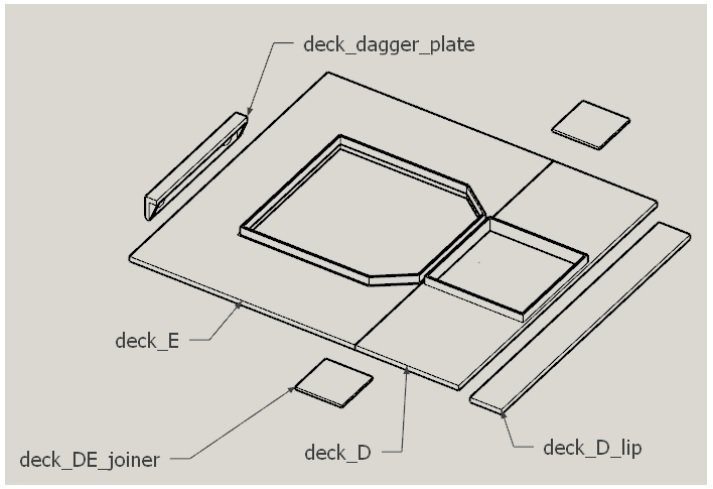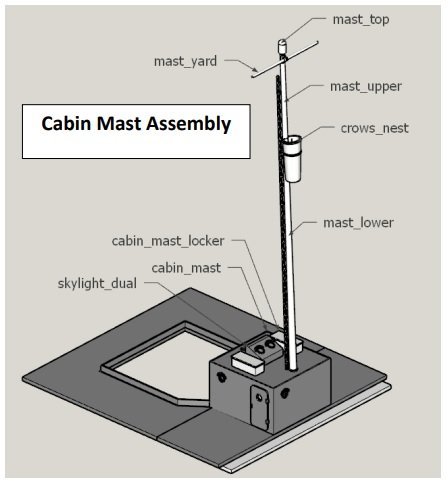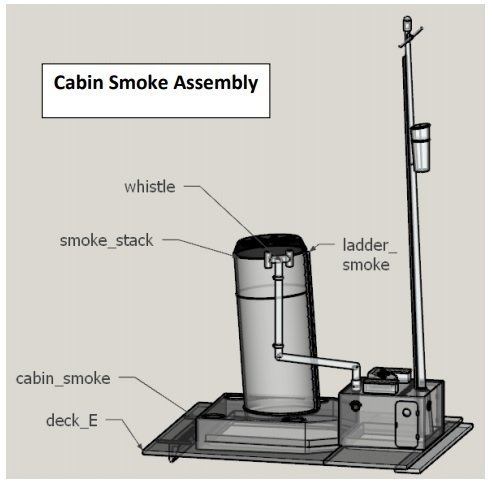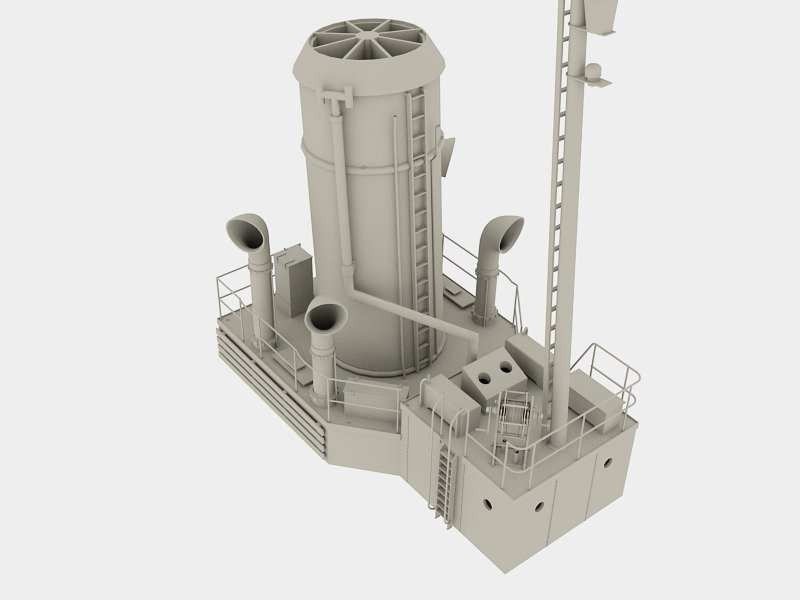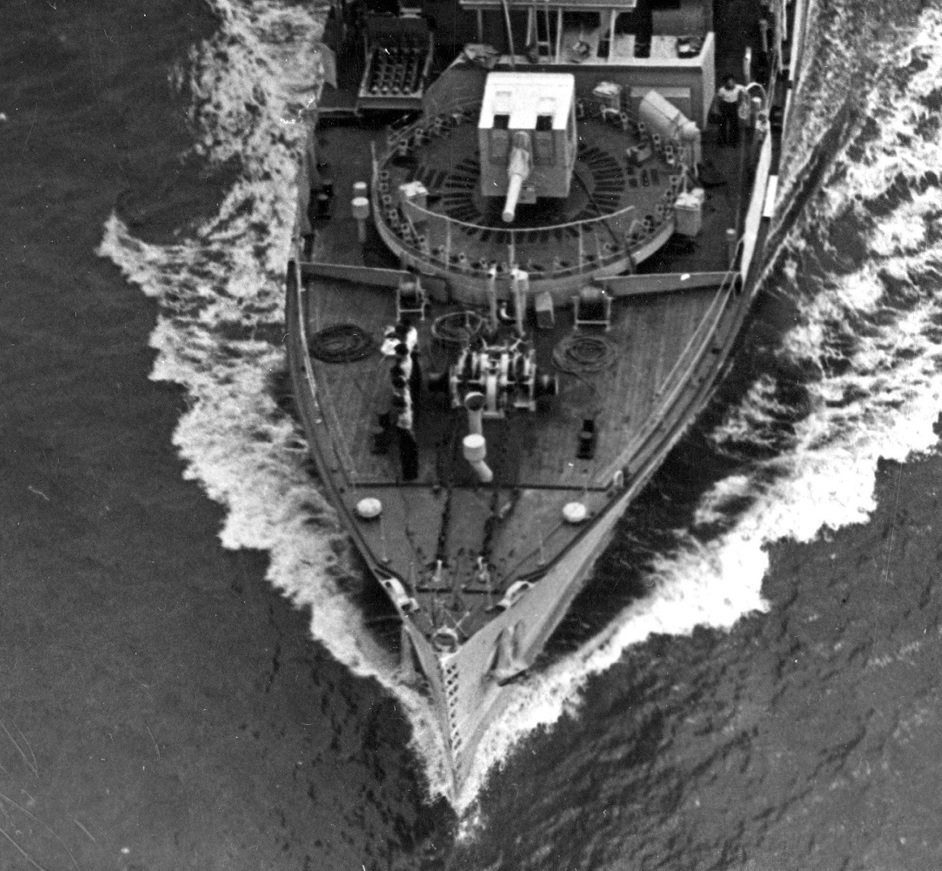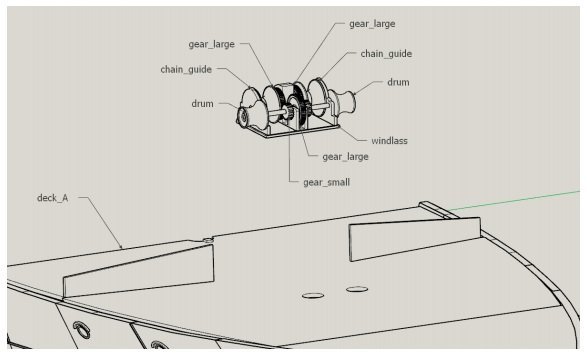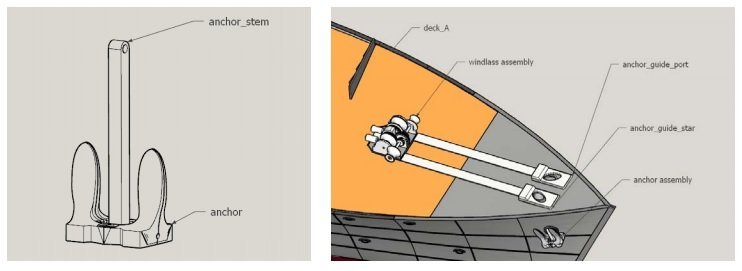-
Posts
3,600 -
Joined
-
Last visited
Content Type
Profiles
Forums
Gallery
Events
Everything posted by yvesvidal
-
I really like the shape of that ship. Greg, you do such a fantastic work: it could easily pass for the real thing ! Yves
-
Imagna, Thank you for pointing this suggestion. It made me look into it and I realized that in fact, this little cabin is the "Galley" !!! The long and bent pipe exiting from it, is the Galley funnel, which supposedly had multiple access to remove the soot due to the cooking. I am modifying my previous post to reflect this change. Yves
- 321 replies
-
- Finished
- Flower-class
-
(and 1 more)
Tagged with:
-
You did a fantastic job on the timbers. This will look very realistic. Yves
- 101 replies
-
- emma c berry
- model shipways
-
(and 1 more)
Tagged with:
-
A few progress on the Smoke Cabin (as it is called....). First the birth of the funnel: And its completion: That is a large part. It does require some sanding and care, too look presentable. Next, other parts required for this assembly, are printed: The funnel stack is somewhat crude and will need some additional details. The ladder is from the kit and three brass tubes are added around the funnel, to make it look more realistic. Again, using the same Calder Craft stanchions, the delicate building of the railings is started. Some 0.6 mm brass wire is used to fabricate the railing. It is then glued with CA and painted white to simulate the tubing found on the prototype ship. Wooden protections are added on the sides, following the 3D rendering seen previously. These parts are extra and not provided in the kit. The funnel is now added and this is a delicate task: all brass tubes have to go in their respective holes and the funnel has to have the correct inclination, which is helped by the printed part. On the deck various chest and cowl hoses are installed. The trunk located between the two cowls, is identical to what is provided in the kit, with its height reduced by 50%. The vertical lockers (see below) are identical to the lockers provided in the kit, but reduced to 50% of their width and length. The rigging is made with elastic wires found at Michael's or Jo-Ann's. This section is complete and I just have to install the painted cowls, on top of their respective tubes. Yves
- 321 replies
-
- Finished
- Flower-class
-
(and 1 more)
Tagged with:
-
MODULE #4 (Galley and Smoke Cabins) This is the second module that I am building. As indicated earlier, the careful installation of the deck floors and precise setting, allow you to approach each module in an almost independent way. For our next installment, I have decide to concentrate on the Galley Cabin (where the mast find its anchor) and Smoke Cabin. Before showing the implementation, let's quickly review what the Virtual kit is offering us: Decks D and E are glued together and coupled with two joiners. I have printed the Dagger plates and the D lip but will not be using them. These parts are for RC builds, to allow an easy access to the inners of the vessel: The Galley Cabin is depicted below: And the Smoke Cabin below: Overall, these sub-assemblies are rather crude and need some pimping up. The mast is printed with long parts, the crow's nest and the top part. I have decided to use a mast made of a wood dowel, instead. The large smoke stack is nicely provided in the kit, with a ladder and the whistle pipes. Since I am trying to depict the HMCS Snowberry, I needed to find more details of these areas. Unfortunately, the archive pictures are very hard to study in this particular area and not of a great help. Fortunately, I found a 3D rendering of what the Snowberry could have been at one point or another: And this is what I will be trying to model. Yves
- 321 replies
-
- Finished
- Flower-class
-
(and 1 more)
Tagged with:
-
Beautiful!!! A 1/700th model always gains at being presented in a small diorama. Yves
- 14 replies
-
- O-class destroyer
- Tamiya
-
(and 2 more)
Tagged with:
-
Here is a picture of all the parts going into the building of the windlass: The Deck #B, covered with fine planks of basswood and stained to show the outrages of the North sea: The main 4 inches gun will be part of Deck #C and is not described in this section. The platform has just been assembled to see how things fit together. Below is a picture of the Snowberry after her refit: And here is the model. I have tried to depict all the major components, visible on the deck. The large ring at the bow is a piece of brass tube (not provided in the kit) The cleat are from the kit but have been closed with small strips of styrene, to reflect the real cleats. The two round vents are not provided in the kit and are tack pins, inserted in the deck. The central mushroom vent is not bent...sorry. I am also missing the two tall and thin tubes located ahead of the gun platform. Not sure what they are.... The stanchions are 20 mm high, two holes and are provided by Calder Craft. They are inserted with a #60 hole and CA glue to secure them. The railing is done with Bead Stringing wire which is very realistic of a steel meshed wire used on the bow of these ships. Its diameter is 0.46 mm allowing it to pass easily into the 0.7 mm holes. That concludes the Module #1 (bow). I will be presenting another module in a few days. Yves
- 321 replies
-
- Finished
- Flower-class
-
(and 1 more)
Tagged with:
-
MODULE #1 : the Bow Well, after finishing the hull, I had a very strong urge to start at least one section of the Corvette. Following you will find the suggested implementation according to the kit and my realization, based on the kit and on pictures of the Snowberry. The kit provides for a relatively detailed windlass: Anchors and guides are also provided in the kit and are very easy and quick to print: Overall, this is the end result: That bow is perfect for a generic Corvette and will fit most of the Lower Class ships and variants. However, the HMCS Snowberry that I am depicting after her upgrade is not exactly equipped in the same way. Finding historical pictures of good quality is a challenge, for that particular ship but a couple of archival pictures are in high resolution and offering numerous details. Yves
- 321 replies
-
- Finished
- Flower-class
-
(and 1 more)
Tagged with:
-
A few updates. I have been waiting for more than a week for the stanchions. Age of Sails handled my request quickly, but placed my shipment on a ground Fedex carrier....$14.00 for an envelope of not even 2 ounces.... Anyway, patience is a must have when you try to build models during a Plandemic. As I mentioned before, the hull is now finished.... I am lying: I need to paint the rudder and the propeller and glue them to call it complete. I pretty much reached my objective which was to build the hull, with this new (to me) 3D printing technology. The long and tedious work done on the various pieces of decks and their perfect fitting on the hull, allows me to approach each segment of deck as a sub-project whenever I feel the urge to do it. That is important on a large model like this one....it is very easy to be overwhelmed. So, to display the hull and most importantly to protect it and be able to store it vertically, I have also built a display stand. The main board is a "step" made of pine of 4 feet long by 10 inches wide. It is your traditional step found at Lowes' or Home Depot. The good thing about these boards is that they are very sturdy and will not warp. On top of it are glued, 1/2 x 1/2 inches pieces of maple wood, colored with Cherry wood stain. The main board is stained with Natural color and varnished with Polycrylic Semi-Gloss, using a foam pad for application. Two #10 (5 mm) nuts are glued inside the hull to provide for a strong and discrete anchor: Yves
- 321 replies
-
- Finished
- Flower-class
-
(and 1 more)
Tagged with:
-
Absolutely. All the other parts will be a piece of cake in comparison. I am looking forward to seeing your new hull develop.... Yves
- 460 replies
-
- Finished
- Flower-class
-
(and 1 more)
Tagged with:
-

Lancia Assunta by maurino
yvesvidal replied to maurino's topic in - Build logs for subjects built 1901 - Present Day
Lovely blue color. It reminds me of my incursions to the shores of the Mediterranean sea. Very well depicted. Yves -
I will be following this Build with interest. I love Calder Craft kits: they are incredibly well put together, have all the details you need to finish the model and always depicts unusual and endearing vessels. My brother built a few of their kits and they are just fabulous. Yves
- 50 replies
-
- Marie Felling
- tug
-
(and 3 more)
Tagged with:
-
Haze, Superb work on that hull. Could you describe in more details, the type of coating you are using to fill up the gap lines of the printing? I have used some generous coats of primer on my 3D printed Corvette and it turned out okay. However, for smaller scales such as 1/72, one need a smoother surface to make it look more realistic. Yves
- 132 replies
-
- charles martel
- battleship
-
(and 1 more)
Tagged with:
-
It is an obsession..... but a good one 😁 Yves
- 174 replies
-
- prinz eugen
- trumpeter
-
(and 2 more)
Tagged with:
-
Oh my God !!! Dumping all this acrylic resin around you beautiful model..... That must be a tough decision. It is looking very good. Yves
-
Beautiful model Craig. It is really hard to believe this is 1/700 scale..... Very realistic and exquisitely painted. Yves
- 225 replies
-
- I Love Kit
- Hood
-
(and 2 more)
Tagged with:
-
This is promising. I came to build models, after watching my father for hours and hours, as a kid. What a wonderful teaching ! Yves
- 71 replies
-
- Lady Nelson
- Amati
-
(and 1 more)
Tagged with:
-
It is getting there..... Patience. Yves
- 127 replies
-
- Bowdoin
- Arctic Exploration
-
(and 3 more)
Tagged with:
About us
Modelshipworld - Advancing Ship Modeling through Research
SSL Secured
Your security is important for us so this Website is SSL-Secured
NRG Mailing Address
Nautical Research Guild
237 South Lincoln Street
Westmont IL, 60559-1917
Model Ship World ® and the MSW logo are Registered Trademarks, and belong to the Nautical Research Guild (United States Patent and Trademark Office: No. 6,929,264 & No. 6,929,274, registered Dec. 20, 2022)
Helpful Links
About the NRG
If you enjoy building ship models that are historically accurate as well as beautiful, then The Nautical Research Guild (NRG) is just right for you.
The Guild is a non-profit educational organization whose mission is to “Advance Ship Modeling Through Research”. We provide support to our members in their efforts to raise the quality of their model ships.
The Nautical Research Guild has published our world-renowned quarterly magazine, The Nautical Research Journal, since 1955. The pages of the Journal are full of articles by accomplished ship modelers who show you how they create those exquisite details on their models, and by maritime historians who show you the correct details to build. The Journal is available in both print and digital editions. Go to the NRG web site (www.thenrg.org) to download a complimentary digital copy of the Journal. The NRG also publishes plan sets, books and compilations of back issues of the Journal and the former Ships in Scale and Model Ship Builder magazines.




